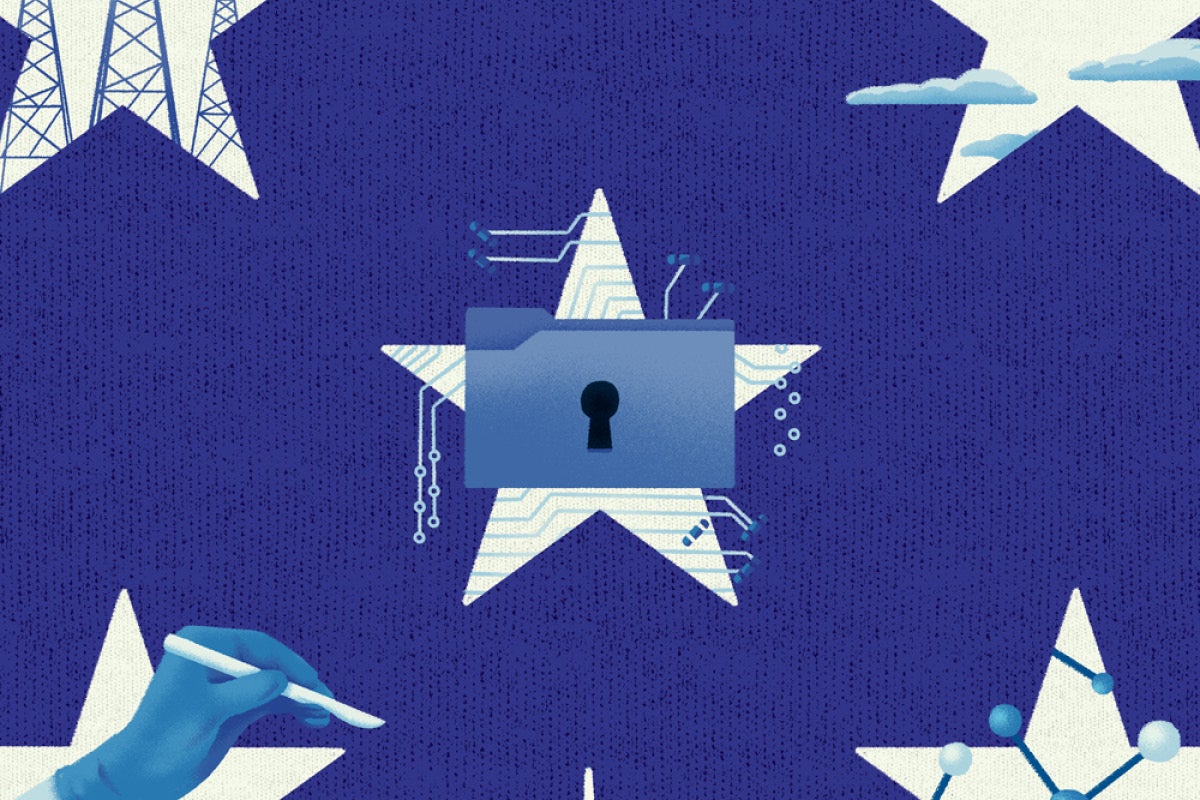
Strengthening Our Nation
Fall 2021 | By Robert Stephens | Illustrations by Patrick Fennessy
The world came to a screeching halt on Aug. 14, 2003 — or at least it did for 50 million people across the northeastern United States and into Canada. On that day a tree branch brushed against a power line in Ohio, starting a series of failures that became the most widespread blackout in North American history. Traffic lights from Boston to Toronto went black. Subways in New York sat still. Roller coasters in Ohio stopped mid-climb. Communication systems went silent, leaving people to wonder, “What’s going on?”
The massive outage, less than two years after the terrorist attacks of 9/11, reminded Americans of the need to have the world’s smartest people on our side, furthering research to improve our security and way of life. UCF researchers are leading the way in many areas. They see the future, anticipate covert threats, and envision real ways to protect everything and everyone by fortifying our infrastructure, advancing our technology, and training the next generation who will carry on their charge.
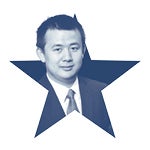
STRENGTHENING OUR POWER GRID
Wei Sun, Associate Professor, Electrical Engineering and Computer Science
Project headquarters: UCF’s Siemens Digital Grid Lab
Partners: U.S. Department of Energy, Open Energy Solutions, Duke Energy, Consumers Energy, Virginia Tech
Nearly 7,000 miles from the epicenter of the Northeast blackout of 2003, Associate Professor Wei Sun, then a student at Tianjin University in China, sat, coincidentally, in a class about power systems. A different question came to his mind: How could that possibly happen in the United States?
“That’s part of the reason I’m doing this,” says Sun. In front of him is a monitor displaying a simulated digitized grid of substations, transmission lines and homes. In the simulation, a red dot occasionally appears. “That’s a gap where a serious breakdown could occur.”
Sun conducted his doctoral research on the 2003 blackout and recovery when blackouts typically traced back to fallen branches, failed transformers or overloaded systems. But America’s energy structure has grown exponentially more complex, which is why Sun came to UCF and is leading energy resiliency efforts.
Here, he’s collaborating with faculty, students, corporate partners and the Department of Energy to explore methods to prevent the newest version of a devastating power loss: cyberattacks.
“Our power grid evolves daily,” says Sun. “We constantly add to it with solar, wind and batteries. But every time a component is added, it opens a potentially vulnerable gap for someone else with bad intentions.”
As Americans continue to invest in solar and wind power, hackers discover more opportunities to wreak havoc by targeting whole systems.
“[Hackers are] more likely to think bigger and shut down transportation, communication and financial systems,” says Sun.
And they do it with far less drama than a lightning strike.
Just before Christmas in 2015, hackers disrupted power to 230,000 people in Ukraine. It’s believed to have started with a phishing email. In late 2019, cyberattackers snuck malware into Texas-based SolarWinds’ system and eventually spied on clients for nine months before the bug was discovered and removed.
“It’s hard to get into the mind of a cyberattacker,” says Sun, “but that’s what our team is trying to do.”
Sun’s team uses mathematical equation simulation and hardware test beds to develop graphical power grids like the one on his screen. Within each grid, algorithms monitor and update behaviors. The red dot shows up the moment something misbehaves, and a warning is shared systemwide, triggering proactive defense and initiating adaptive self-healing actions. It’s similar to the software that credit card companies use to immediately notify customers of suspicious purchases.
“[Hackers are] more likely to think bigger and shut down transportation, communication and financial systems.”Wei Sun, associate professor of electrical engineering and computer science
The Department of Energy thinks so highly of the technology that it awarded Sun’s group a $3.2 million grant in August to keep the momentum going. A team of corporate partners and universities are contributing to a $1.55 million cost-share for additional research.
The goal is to eventually implement the program into a utility test bed with Duke Energy in the Southeast and Consumers Energy in the Midwest.
“Every day attackers are trying to break into the grid, and we can only imagine what they want to do,” says Sun. “With this, we can be stealthier than they are, and stay a step ahead.”
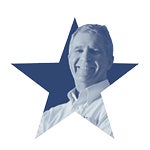
STRENGTHENING OUR DEFENSE
Konstantin Vodopyanov, 21st Century Chair, Professor, Optics and Photonics, and Physics
Project headquarters: Center for Research and Education in Optics and Lasers (CREOL)
Partners: NASA, Air Force, Navy, U.S. Department of Defense
In an indiscreet space on the east side of UCF’s campus, Professor Konstantin Vodopyanov looks around. “It happened right here, in this room,” he says. Three years ago, he saw what no one else could see.
“We all know certain molecules and isotopes are in the air we breathe,” Vodopyanov says, “but to see 10 of them defined with certainty … that was a big step for us.”
It had taken more than a decade for Vodopyanov to develop the special table-mounted laser in his CREOL lab. With it, he could identify water droplets and carbon dioxide — not surprising. But he also saw carbon monoxide, methane and nitrogen dioxide, which occur naturally but can also be toxic in heavy concentrations.
How could he be 100% sure of what he saw with the laser?
“I read the ‘bar codes,’ ” says Vodopyanov.
If you could see into the infrared spectrum, you might see that each molecule is encoded with a series of resonances, or lines. Vodopyanov’s laser can see all of them. It sends a beam across a room or between buildings, combing the bar codes on those microscopic molecules the way a scanner at Lowe’s reads the bar codes on paint cans.
“The code never changes, whether the molecule is on the moon or in front of your face,” says Vodopyanov.
Vodopyanov’s laser technology could be used in healthcare to diagnose myriad illnesses and diseases by identifying molecules in a patient’s breath. It could also be a tool to alert the Department of Homeland Security if biohazardous chemicals were to be released into the air.
“We are just beginning to recognize the benefits of this technology,” says Vodopyanov, whose research has attracted more than $5 million in funding since he came to UCF in 2013. The university offers more than opportunities for building corporate partnerships. “[UCF] has the right environment.”
Vodopyanov grew up in a family of physicists, including a grandmother whom he’d visit in Siberia. In her lab he would observe how she gathered scientists around to share ideas. “That’s what it is like here. We learn from each other.”
His friendly demeanor helps too. In a California pub he sat down next to 2005 Nobel Prize winner John Hall just to ask some questions about laser frequency combs. A few years later, he saw another Nobel Prize-winning scientist, Theodor Hänsch, riding a train in Munich, so he asked Hänsch what he thought about using the broadband frequency comb (laser) to identify molecules in the air.
“[Hänsch] said it was a great idea,” says Vodopyanov. “Moments like that inspire me to keep moving forward.”
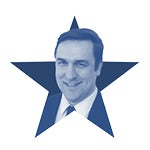
STRENGTHENING OUR ECONOMY
Paul Gazzillo, Assistant Professor, Computer Science
Project headquarters: L3Harris Engineering Center
Partner: U.S. Department of Defense
The words “2 trillion dollars” roll right off the tongue. The mind, however, cannot comprehend the enormity. Spend a billion dollars per year and it would take 2,000 years to exhaust $2 trillion.
Even for a computer scientist, it’s just too much.
“It can be very complicated,” says Assistant Professor Paul Gazzillo. He heads a project with the lofty goal of tracking the movement of illicit corporate money worldwide, which totals an estimated $2 trillion every year. The number is raw because it’s a blend of tax evasion, money laundering, healthcare fraud, credit card breaches, drug trafficking and any scheme intended to remain undetected. For investigators, it can take years to track one case.
With the help of a former FBI agent and two other computer science researchers, Gazzillo is on a mission to simplify the process. When Gazzillo says they might be onto something soon, it should matter to everyone. Because every dollar in a stack of $2 trillion could be tied to an unfathomable story:
- In 2018 the Department of Justice seized more than $140 million from an online company that profited from ads related to prostitution, including child prostitution and human trafficking. Banks and major credit cards had stopped providing service, so the online company turned to digital currency and shell companies. The FBI said if they had had readily available ownership information about the company, the abuse of victims “could have been halted years earlier than it was.”
- Investigators in 2015 uncovered the unusual buying and selling of racehorses between shell companies. It turns out, the transactions were a cover for a Mexican drug cartel, whose alleged boss claimed to have killed 385 Americans.
- When the federal government urgently issued checks to small businesses so they could pay employees during COVID lockdowns (the Paycheck Protection Program), it’s estimated that fraudulent applications accounted for $76 billion that could have otherwise gone to legitimate businesses in real need.
Gazzillo is using a technique called “automated reasoning,” where computing systems apply logic to data. It could eventually help investigators sift through complex networks of corporate relationships and create a complete picture of each company.
“It will help investigators do their jobs a lot faster,” says Gazzillo.
In August, Gazzillo received a nearly $1 million Defense Advanced Research Projects Agency (DARPA) Young Faculty award to lead a research team at UCF that will investigate complex corporate relationships.
“It’s exciting because look at what DARPA has done,” Gazzillo says. “They were at the forefront of the internet and GPS. With their support, and a good team of people, I really believe we can produce a major benefit to society.”
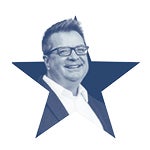
STRENGTHENING OUR FRONTLINES
Greg Welch, AdventHealth Endowed Chair in Healthcare Simulation, College of Nursing
Project headquarters: Synthetic Reality Lab
Partners: Office of Naval Research, Army, U.S. National Science Foundation, SoarTech
There’s a body in Professor Greg Welch’s lab lying prone on a bed. It’s a boy named Joe, maybe 9 years old. He isn’t alive, but he isn’t completely lifeless either. He’s a hybrid on a number of levels.
“I don’t feel well,” Joe says, coughing. He sounds miserable.
“What’s wrong, Joe?” a nurse in training asks.
“My throat is scratchy,” he says. “I feel a little hot. Where’s my mom?”
Joe is what Welch calls a “physical virtual patient.”
Physically, you can reach out and touch him. Virtually, a computer generates his voice and his visible symptoms, which are projected from beneath the plastic body.
The nurse in training pulls back a blanket and sees a rash all over Joe’s torso. “Please help,” Joe says.
“One advantage of this technology over a virtual human is that you don’t need virtual reality goggles — you can see and touch the body as if it’s really there, because it is,” says Welch. “The advantage over a manikin is that our patient isn’t static. There’s a dynamic richness to it — we can change the symptoms, the behaviors and [other factors].”
Tomorrow Joe might be unconscious. Or the patient might change to a woman showing stroke symptoms, like one side of the face drooping. Or it could be a soldier on a gurney, screaming. Under the blanket there might be a gaping wound.
“The goal is to make it as experiential as possible,” says Welch. “Nobody wants nurses and medics learning how to deal with the anxiety of a traumatic injury on the job while things turn chaotic, and a life or limb might be lost. So, we’ve developed this patient to more realistically simulate what cannot safely be duplicated.”
For Welch, this is more than a research project — he’s helping the people who have dedicated their lives to protecting us. His work has led to dozens of U.S.-related patents, with others in process. Yet he knows the work, and the successes, are not about him.
“A command group from the Naval Air Warfare Center Training Systems Division [NAWCTSD] came into the lab a few days ago. Their mission is significant: to enhance the capabilities of our nation’s Navy and Marine Corps via training,” Welch says.
From his office at the Institute for Simulation and Training, Welch can see straight over a fence to NAWCTSD. It inspires him.
“I have great respect for people on our frontlines — in healthcare, the military and law enforcement,” Welch says. “They’ve chosen professions that are taxing, risky and often thankless. They do it for us, not for themselves. Maybe this is one way I can, in my own humble way, begin to repay them.”
Building Our Next Line of Defense
The announcement went public in the spring: UCF’s master’s degree program in cybersecurity and privacy in the fall of 2021. Three months was a tight window to both spread the word and hope a few graduates would make an immediate pivot to participate in a brand-new program.
“The response surpassed my expectations,” says Yan Solihin, interim chair of UCF’s computer science department and director of the university’s Cyber Security and Privacy cluster, who came to UCF after serving as director for the U.S. National Science Foundation’s Secure and Trustworthy Cyberspace program.
In a best-case scenario, Solihin had 16 slots available. He received nearly twice as many applicants. He has good reason to believe UCF’s master’s program in cybersecurity and privacy will attract many more interested students over the next few years.
Trends over the past decade at UCF might have foretold a surge of interest in cybersecurity. In the past 10 years, enrollment in computer science related majors has more than quadrupled to 4,700 students. In addition to graduate degree programs in computer vision and cybersecurity and privacy, UCF has launched a minor in secure computing and networks, a master’s in digital forensics, and now offers a graduate certificate in modeling and simulation of behavioral cybersecurity. The cybersecurity cluster has grown to a collaboration of eight faculty members who work with more than 50 student researchers across multiple disciplines.
Earlier this year, the NSF awarded UCF $2.9 million to prepare a pipeline of cybersecurity talent for the workforce. For the same reason, Solihin’s department has received $5 million in external grants from government agencies and private entities since early 2020.
“We could have a national powerhouse in cybersecurity and privacy education to match the quality of our research program,” Solihin says. “We already have the energy, the know-how and the critical mass of students. It’s only a matter of scaling up our resources to meet the demand. Once we have more faculty members and lab space, we could expand the master’s program and create a bachelor’s degree in cybersecurity and privacy.”
The demand is exploding. According to cyberseek.org, in Florida alone there are more than 21,000 job openings in cybersecurity. Public and private employers are finally realizing cyberattacks, like ransomware, are everyday threats, and the costs of being a victim are far more exorbitant than hiring people who are trained to protect data and systems.
Solihin is among the professors who have come to UCF in recent years for this very reason: to help expand the talent pool in our nation’s security. “You can see where this is all going,” he says before pausing and emphasizing two words: “Very quickly.”